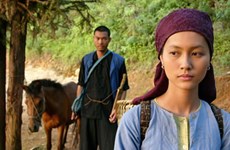Gia Lai works hard to preserve ethnic cultural identities
Authorities of the Central Highlands province of Gia Lai have devised a series of measures to preserve and promote cultural identities of ethnic minority groups.
 Illustrative photo. (Photo: VNA)
Illustrative photo. (Photo: VNA)Gia Lai (VNA) – Authorities of the Central Highlands province of Gia Lai have devised a series of measures to preserve and promote cultural identities of ethnic minority groups, which account for over 45 percent of the locality’s population.
The province, which possesses various cultural identities, considers this a key task for its 2015-2020 socio-economic development plan.
The province is implementing a 2016-2020 project to preserve and uphold the value of the Gong culture space, part of a plan to conserve and promote cultural values of ethnic minority communities. The space of Gong culture in the Central Highlands was recognised by UNESCO as an intangible and cultural oral masterpiece in 2005.
Gia Lai boasts more than 6,000 sets of gongs, many of them extremely old. It is home to 13 national sites and site complexes, as well as four local-level ones.
Research on gongs and traditional costumes of local ethnic minority groups have attracted the interest of scientists in and outside the province.
As part of efforts to preserve the art genre, many gong-playing courses have been organised in schools, and clubs and ensembles have been established. Gong festivals are held every two years, drawing many gong troupes from across the province.
Local authorities are also working to preserve the Bahnar group’s epic poems, which received the title of National Intangible Heritage in September 2013.
Preferential policies have also been adopted to encourage singers and storytellers to continue performing and passing their knowledge on to younger generations.
Additionally, training courses have been organised for staff working in cultural fields to improve their knowledge of conservation of traditional culture.
Communication campaigns aim to raise public awareness about the importance of cultural preservation, thus enhancing ethnic minority groups’ ability to conserve and promote their cultures.
Relevant agencies are working to support vocational training and build traditional trade villages that make brocades, weave and produce traditional musical instruments. Artisans were given funds to open classes on gong playing, folk singing and brocade weaving.
Local authorities have paid special attention to restoring and maintaining traditional festivals. They have also built and upgraded infrastructure in order to help maintain cultural parks, villages, and spaces for cultural exhibitions and museums.
According to Phan Xuan Vu, Director of the provincial Department of Culture, Sports and Tourism, many traditional cultural identities of the locality are falling into oblivion because of increasing economic and cultural exchange among ethnic groups.
He urged stronger efforts and more practical measures from local authorities to deal with the situation, contributing to preserving cultural identities of local ethnic minority groups.-VNA













